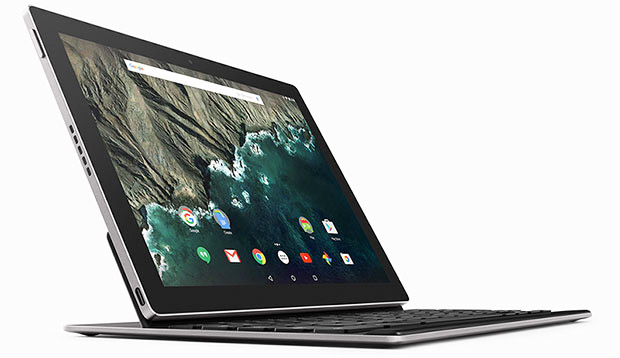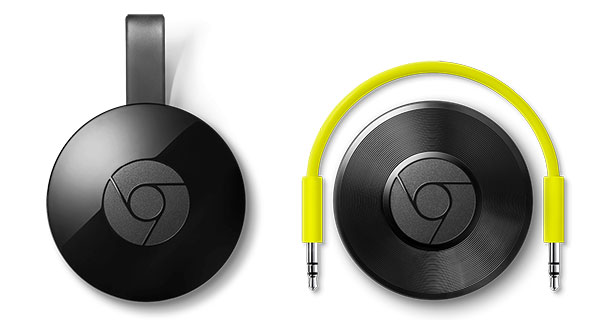
Google on Tuesday introduced a pair of new phablets, a couple of Chromecasts and the first tablet it built by itself. The unveilings took place at the company’s Nexus event in San Francisco.
Months of leaks drew very accurate portraits of the US$499 Huawei Nexus 6P (pictured above) and $379 LG Nexus 5X and other Android hardware, but Google filled in the details ahead of the expected Oct. 5 release of its next mobile operating system: Android 6.0 Marshmallow.
The Most Premium Nexus 6P
Google has billed the Nexus 6P as its “most premium phone” to date. The Nexus 5X cuts a few corners to keep pace with the flagship. For the Nexus 6P’s part, it appears to have been built to battle Apple’s latest standard bearer: the iPhone 6s Plus.
About three weeks and $300 separate the Nexus 6P from the iPhone 6s Plus, but they’re a lot closer to one another in several other regards.
The full-metal-bodied Nexus 6P sports a 5.7-inch WQHD display that has a resolution of 2560 x 1440, which gives the screen a much higher pixel density than the iPhone 6s Plus’ 1080p Retina display. At 5.5 inches, the iPhone 6s Plus screen is even slightly smaller that the Nexus 6P’s.
The Nexus 6P raises the iPhone 6s Plus’ 12-MP camera by a slight 0.3 MP, but its 8-MP selfie cam offers a more significant jump over its rival’s 5-MP FaceTime camera.
The Nexus 6P also includes a fingerprint reader for Android Pay, Google’s hardware and software answer to Apple Pay and Touch ID.
Google appears to have gotten the biometric sensor’s placing right, according to Joe Silverman, owner of New York Computer Help, a phone and tablet repair center that specializes in Nexus products.
“I’m a big fan of the fingerprint reader being on the back of the phone, as that is naturally where your finger is on the phone, versus the front of the phone like the iPhone and Samsung Galaxy has.”
While the iPhone 6s Plus’ A9 processor is viewed as possibly the fastest mobile processor on the market, Google didn’t even go with the best System on a Chip Qualcomm offers. Instead it opted for the Qualcomm Snapdragon 810, a step below the top-of-the-line 820.
However, the Nexus 6P and Nexus 5X both leverage a low-level system that Google has dubbed “SensorHub,” which could offload a small, yet significant, amount of the processing workload. The sensor system gives the SoC just a tad more context, which increases the chip’s efficiency.
The Nexus 5X Threat
While the Nexus 6P threatens high-end handsets from the low end, the Nexus 5X does the opposite. All of the compromises Google and LG made in the Nexus 5X were in the interest of bringing the handset down into the mid-tier range.
The comparison between the Nexus 5X and the Nexus 6P looks a bit familiar to Darren Hayes, a professor at Pace University’s Seidenberg School of Computer Science and Information Systems.
“The look and feel of these devices is very much like the iPhone 6s and 6s Plus,” he told TechNewsWorld.
The Nexus 5X may not compare as favorably to the iPhone 6s as the Nexus 6P does to the iPhone 6s Plus, but its tech and $379 price point make it a compelling alternative.
The Nexus 5X matches the pixel count of the iPhone 6s, with a 5.2-inch display that is significantly larger than its competitor’s 4.7-inch screen.
Processing power is where the Nexus 5X and iPhone 6s differ the most, though, as the former uses a mid-range Qualcomm 808 and the latter uses Apple’s A9.
The Nexus 5X’s front and rear cameras almost match the pair on the iPhone 6s, but the Nexus device simply doesn’t have the premium build to compete with its Apple rival. The 5X uses plastic casing, and its Gorilla Glass 3 screen surely is not on par with the custom display Apple and Corning concocted.
The better comparison for the 5X may be its bigger sibling.
“The LG Google Nexus 5X and the Huawei Google Nexus 6P seem to be very similar in terms of specs,” said Seidenberg’s Hayes. “There are some obvious differences, such as the 5X’s 2 GB of RAM and the 6P’s 3 GB, so there is a slight difference there. But basically it seems like the same phone in general.”
Google’s Own Pixel C
Google collaborates with its hardware partners so that they can help “guide” the Android ecosystem forward, said newly anointed CEO Sundar Pichai. This time around, however, the company has gone one step further.
Google’s new Pixel C tablet is the first computing device the company has conceived and created end-to-end. It’s called a “laplet,” because Google built it a custom keyboard, which links to the core unit magnetically.

What’s known about the Pixel C, which is slated for availability in time for the holidays, is that it’s an Android 6.0 Marshmallow device. It has a 10.2-inch display with a pixel count of 2560×1800. It’s driven by Nvidia’s Tegra X1 SoC, it has 3 GB of RAM, and it comes with either 32 GB or 64 GB of storage.
A Double Helping of Chromecasts
Rounding out the brand-spanking new line of hardware Google hauled to the show: two unique new Chromecast products. Chromecast will serve all of a consumer’s casting needs, while Chromecast Audio brings hi-fi sound systems into the mix.

The refreshed Chromecast works just as its predecessor did. The Chromecast Audio connects to third-party sound systems, enabling users to cast and control music using dedicated speaker systems.
The previous Chromecast was “a waste of a USB stick,” according to New York Computer Help’s Silverman.
It just didn’t have enough supporting content, he said, adding that he hopes the Chromecast 2 is worth its $45 price tag.
“I’m not so impressed by the regular dongle it offers, but the second streaming dongle it comes with, Chromecast Audio, looks pretty interesting, allowing you to turn any speaker into a wireless audio device,” Silverman pointed out. “It meshes with Spotify, Apple Music and Google Play Music, so it’s a nice feature to turn your TV into a wireless speaker setup.”



















































